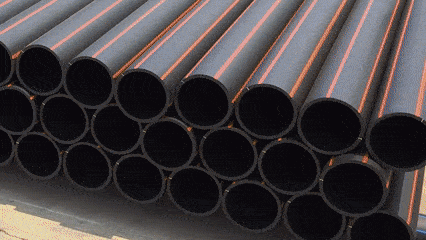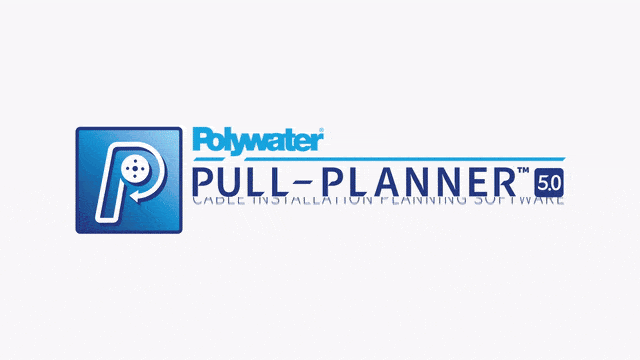Underground Cable-in-Duct Installation: 5 Trends to Consider

Undergrounding cable can be a long and costly process. Many utilities in the past have opted to install their electrical and communications cable overhead. However, circumstances in the last few decades, driven by recurrent extreme weather events and other climate-related challenges, have exposed vulnerabilities in parts of the electrical grid and communications networks. These challenges, combined with increasing customer demand, have tipped the scale in favor of going underground for many privately owned and public utility providers.
The feasibility of undergrounding today has been enabled by manufacturers from a variety of specialties and disciplines. From the creation of innovative construction equipment, smarter planning tools, improved installation techniques, IoT-enabled monitoring systems, and advancements in materials science, undergrounding has become a more sustainable and affordable long-term investment. Within that context, planning engineers are tasked with making their projects as effective, efficient, and economical as possible. With all these underground electrical and telecommunications endeavors on the horizon, here are the 5 trends that underground infrastructure engineers may want to consider for a cable-in-duct installation project.

1. The Rise of Smarter Planning Tools
Planning is an essential part of the underground cabling process, and engineers are no strangers to the old Ben Franklin adage, “If you fail to plan, you’re planning to fail.” However, with modern planning tools made possible by a variety of technologies, the phrase could be amended to, “failing to embrace smart planning is foolish business.” That is because the tools available today make the legacy challenges of underground cable installation outdated. Here is just a small sampling of platform technologies that are making the planning process a smarter business strategy:
Advanced Ground Penetrating Technologies (GPT):
Complex rural and urban terrain have hidden challenges underground that can lead to project setbacks and delays. However, with the rapid advancement in technologies like Ground Penetrating Radar (GPR), engineers can now get detailed information about subsurface conditions. This helps in locating utilities, assessing soil properties, and identifying potential risks before excavation, thus ensuring safer and more efficient project execution.
Integration of Digital Twins and BIM (Building Information Modeling):
Along with technology that helps better visualize underground conditions, like GPT, is the ability to create a virtual replica of underground infrastructures, using BIM technologies and a Digital Twin. Engineers can simulate various scenarios, optimize designs, and enhance maintenance and operation strategies. The integration of these technologies offers more accurate longer-term planning, cost-effective solutions, and improved asset management.
Trench Design Software:
Most trench design software on the market allows engineers to create a trench cross-section and quickly test the feasibility of the design, making it easier and more efficient to plan complex cable trenches. Users get access to a large library of predefined cables, and other elements that go in the trench. Some versions of trench design software allow for engineers to combine multiple infrastructure elements like water, gas, sewer, electrical, and fiber cables within the same duct bank. With these enhanced versions, users can quickly try out distinctive design configurations and export quantity calculations for backfilling and cables. Some software versions feature the ability to run advanced finite element simulations of thermal resistivity and magnetic fields of the trench cross-section. This helps to prevent potential performance failure of the actual cable installation that may be caused by specific environmental conditions where the trench is created.
Cable Analysis Tools:
There is a range of software solutions on the market that provide cable analysis to calculate and measure things like cable ampacity, cable sizing, and maximum demand calculation. While these are not entirely new concepts, the variety of features from providers has grown. Planning engineers can explore what toolset fits their needs.
| Video: Polywater Pull-Planner Cable Installation Planning Software |
Cable Installation Planning Software:
Friction during cable-in-duct installation can be managed with specialized cable lubricants. However, cable pull-planning software allows engineers to safely maximize the distance of the cable pull and minimize, or even eliminate, cable splices. The number of vaults and pull boxes can be reduced, resulting in lower project costs. The software also analyzes jam probability, estimates ending tension and sidewall pressure, and helps determine the best direction for the pull—all to confirm a safe and efficient cable installation. Pull-planning software can also provide more accurate coefficient of friction (COF) calculations when field data is recorded and back-calculated within the software. Using these tension measurements to back calculate the COF helps engineers better understand the reasonable safety factors and more accurately plan for future cable installations that utilize the same conduit, cable, and lubricant options.
The implementation of just one of these tools by itself is impressive, but the combination of these technology platforms has the potential to take underground cable-in-duct installation into a whole new era—one where the entirety of the cable installation is planned and virtually mapped.

2. Advancements in the Science of Friction Management
Many practices, standards, and benchmarks for safe cable installation are based on data from decades past. These were founded on the technology and capability available at the time to manage safe levels of friction and the resulting tension and sidewall pressure between the duct and the cables. Using conservative calculations for the coefficient of friction is widely regarded as a best practice because the risk of cable damage during installation is significant. In some circles, it is believed that most cable failures occur because of damage sustained to the cable during its installation. It is better to be safe than sorry; however, using a conservative safety factor can limit project potential and increase costs.
| Related Content: Data from Polywater® Helps Predict Coefficient of Friction in a Cable Pull |
With consideration to the maximum tension limits that cable manufacturers provide, specialty cable lubricant manufacturers (such as Polywater) have increased the performance boundaries of what a lubricant can do for cable installation. Today, the unique combination of modeling software (that uses actual cable and field data), along with the use of high-performance cable lubricants and innovative installation techniques, cable can be safely pulled over significantly greater distances—more than double the standard distances of decades past. A novel practice that contributes to these performance outcomes is the pre-lubrication of conduits while proving the duct before cable installation. Several techniques can be used to pre-lubricate the conduit. One method is the use of lubricant spreaders or sponges that carry a specification-grade cable lubricant through the duct. This primes potential friction surfaces that are further down the conduit line or at conduit bends that are typically more challenging to lubricate using conventional methods. Advancements like these have led to greater efficiencies during installation and established systems with improved reliability.

3. Improved Cable Lubricant Application Practices Improve Safety at the Installation Site
Underground cabling is serious business. Worker health and safety guidelines are part of industry standards and practices and are an important aspect of the cable installation process. Workers undergo comprehensive training to familiarize themselves with safety procedures, equipment operation, and emergency protocols of the work environment. The use of PPE (Personal Protective Equipment), like hard hats, high-visibility clothing, gloves, safety boots, eye protection, and fire-resistant (FR) clothing keeps workers secure. Gas detection technologies are used to monitor air quality and alert workers to the presence of any harmful gases in confined spaces like an underground vault. A significant investment is placed on safety. Even the smallest of things can go a long way to improve safety in the work environment—such as cable lubricant application techniques.
It is common for workers to apply lubricant manually (by hand) to the cable as it is being installed. This is certainly an accepted practice for workers if they are wearing well-fitting gloves. However, there are advanced techniques such as applying the lubricant with a mechanical pump that can more accurately and efficiently deploy the lubricant onto the cable while reducing waste or spillage. This technique can maintain a cleaner working environment and minimize human error factors. Automated lubricant application also provides better ergonomics. Workers can maintain a more fixed, upright posture while guiding the lubricant onto the cable via the pump hose, versus hunching over the cable and reaching into a bucket. Additionally, this application technique assures proper friction reduction. Lubricant can be applied more consistently, ensuring an ample amount is carried deep into the duct where it is most needed. Pumping lubricant onto a cable is safer for the cable, duct system, and work environment.

4. System Hardening Begins at Installation
A big part of choosing to underground cable is the resulting resilience against extreme weather events, rising sea levels, and other climate-related challenges. The proactive incorporation of adaptive designs, robust materials, and innovative solutions to mitigate risks and ensure the longevity and functionality of infrastructure systems is crucial. As part of proactive system hardening measures, many are integrating the installation of duct sealants as part of the cable installation process. While several industry standards and codes require the use of conduit sealants to prevent the ingress of water, gas, and the infiltration of animals and insects, some go beyond the minimum requirements to create systems capable of withstanding the impact of severe weather conditions, such as high waterhead pressures. There are a variety of conduit sealant options from expanding 2-part foam chemical sealants to engineered mechanical sealants. The selection should at least meet the minimum performance requirements. The practice of sealing conduits in conjunction with new cable-in-duct installation is growing in favor. Depending on the scale of the project, efficiencies can be gained by installing them in parallel with cable.
| Related Content: Sealing Conduits for Resilient Electrical and Telecommunication Systems |

5. The Cost of Doing Business
Many of the supply chain issues and material lead time challenges that the construction industry has experienced due to the global pandemic and global conflicts are trending lower. Additionally, it is predicted that costs will not fluctuate as wildly as in previous years (a 217% increase in 2022*) but will experience moderate increases (2 – 4%) throughout 2024. For projects that have been in a holding pattern, it seems like a suitable time to move them forward, as costs in general appear to be leveling out—especially when compared to the recent past. While there are always some uncertainties, the time to underground is now.
All things considered, the practicality of undergrounding is an imminent reality. By staying informed and incorporating these innovative approaches into their practices, planning and design engineers can contribute to resilient, sustainable, and efficient underground electrical and telecommunications projects in 2024 and beyond.
Interested in discussing underground solutions from Polywater?
(*Source: ENR)

